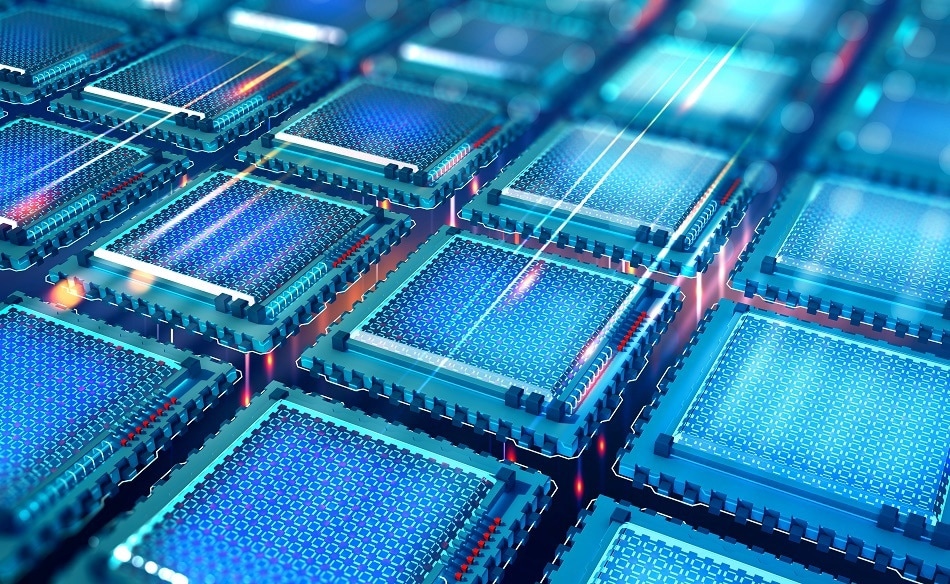With the potential to change the world and disrupt every industry, quantum computing promises machines that are faster than today’s computers with the additional ability to solve extremely complicated problems that modern day supercomputers just can’t crack.

Image Credits | shutterstock.com/g/Yurchanka+Siarhey
Despite being proposed over 30 years ago, quantum computing is still relatively undeveloped. Quantum computers consist of a quantum processor – sets of quantum bits or qubits operating at an extremely low temperature – and a classical electronic controller to read out and control the processor. The machines utilize the unusual properties of matter at extremely small scales – the fact that a qubit, can represent "1" and "0" at the same time, a phenomenon known as superposition. (In traditional digital computing, transistors in silicon chips can exist in one of two states represented in binary by a 1 or 0 not both).
Under the right conditions, computations carried out with qubits are equivalent to numerous classical computations performed in parallel, thus greatly enhancing computing power compared to today’s powerful supercomputers and the ability to solve complex problems without the sort of experiments necessary to generate quantum phenomena.
Manufacturers such as Microsoft, IBM and Google, as well as several governments across the world, are developing quantum computers, but so far, only small machines containing 12 or 16 qubits have been developed in the laboratory. As a result, quantum computers are not yet commercially viable and this is likely to be the case for some time – the technology is unstable and needs to be stored in a cool environment for faster and more secure operation. Quantum computers must ideally operate under a high vacuum and ultra-stable mechanical and thermal environments to prevent the unwanted excitation of the qubit state; cryogenic conditions are required because thermal energy can excite vibrational motion that could disturb quantum computing operations.
It has been recognized that if improvements are made to computers, there must be a corresponding enhancement in their memory performance, leading to the idea of cryogenic memory. Microsoft and semiconductor specialist Rambus are currently collaborating on a project to develop prototype DRAM modules - memory blocks – that function at cryogenic temperatures, that is below -180°C. The project represents the next step towards improving capacity and energy efficiency of computer memory, which is necessary for high performance and quantum computing.
Their prototype blocks are currently designed for use with supercomputers, with the project aiming to bridge the temperature gap between current computers – which operate at 27°C- and true quantum computers functioning at below -180°C. These memory blocks will enable quantum computers to be faster and more efficient at cooler temperatures – but these cryogenic temperatures come at a price, and a huge electric bill!
Elsewhere, academic research has focused on the control system which will need to function under cryogenic temperatures since solid-state quantum processors are likely to operate below 1 Kelvin or -272°C. Researchers from the University of Sydney, the University of California Santa Barbara and Purdue University proposed a micro-architecture for the control of a large-scale quantum processor at cryogenic temperatures. They demonstrated “that a semiconductor qubit can be controlled using a cryogenic FPGA (field-programmable gateway array) system and custom switching matrix for steering analog waveforms at low temperature”. They expect that this kind of integrated, autonomous control systems will become increasingly significant in developing and demonstrating fault tolerant quantum machines.
Quantum computing has the potential to drastically alter the world, but research in the area is taking time; the realization that cryogenic temperatures are required to enable the functioning of such computers has lengthened that timeframe, but one day, quantum computers will be solving complex problems once thought impossible.
References and further reading
Microsoft's cool quantum computing plan embraces cryogenic memory
Cryogenic Control Architecture for Large-Scale Quantum Computing
Quantum computing in cryogenic systems
Microsoft and Rambus set their sights on cryogenic computing
Cryo-CMOS Circuits and Systems for Quantum Computing Applications
6 Practical Examples Of How Quantum Computing Will Change Our World
How NASA uses quantum computing for space travel and robotics
Disclaimer: The views expressed here are those of the author expressed in their private capacity and do not necessarily represent the views of AZoM.com Limited T/A AZoNetwork the owner and operator of this website. This disclaimer forms part of the Terms and conditions of use of this website.